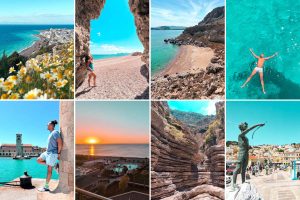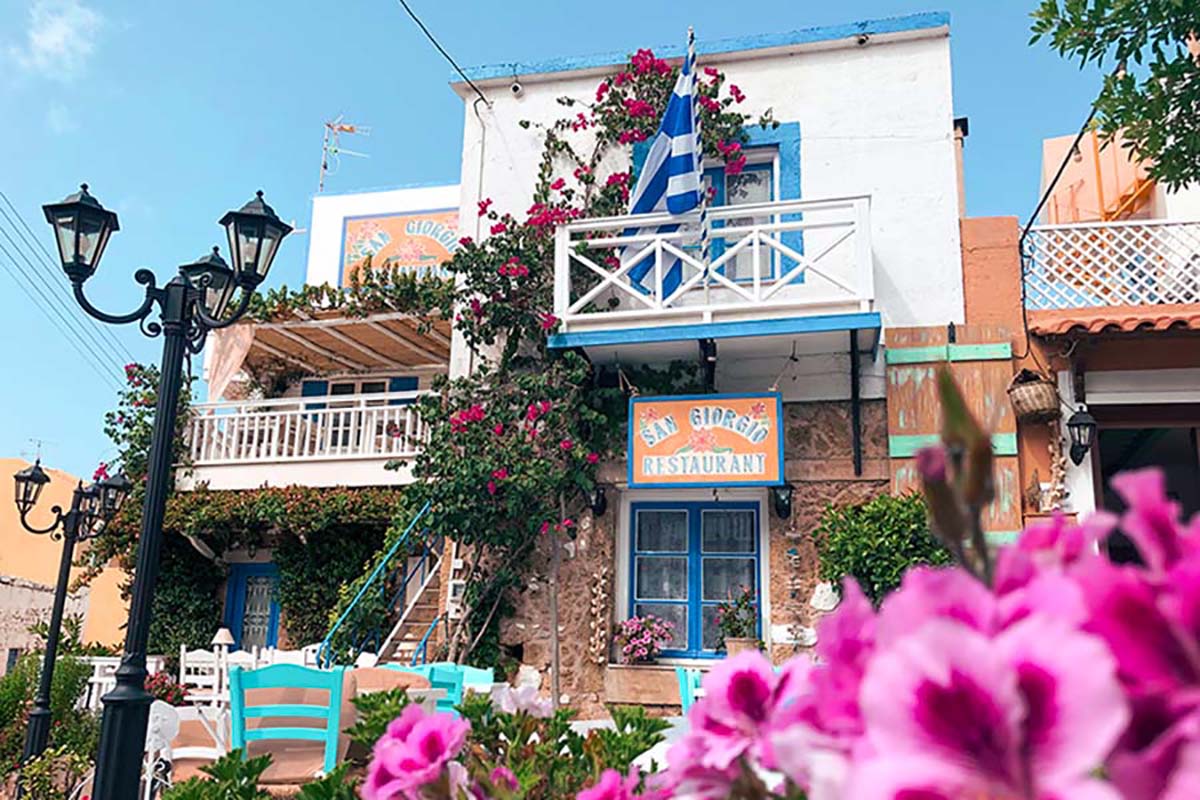
Save time, money, and unnecessary stress traveling Crete with these insider tips! From where to stay on the island, whether you should rent a car, which are the best months to visit, whether it’s card-friendly, to how much you should budget per day.
Excited to visit Crete for the first time but dreading the research and planning? Don’t worry – we’re here to help.
We spent two incredible weeks exploring east and west Crete. Made some unforgettable memories as well as some rookie travel mistakes. And we’re here to share both our highs and lows so you can make the most out of your vacation.d
Using our first-hand experience, we’re sharing insider tips that will help you save money, time, and stress visiting Crete without spending hours on research.
From how to decide where to stay in Crete, what’s the best way to get around, when’s the best time to visit, and whether you can pay by card, to our secret tips for traveling Crete on a budget.
Make sure you bookmark, share or pin this Crete Travel Guide so you can refer back to it later.
Here’s a quick sneak peak of our key tips:
1. Stay Close To The Places You Plan on Visiting
Deciding where to stay in Crete is crucial! Not to exaggerate, but this can easily make or break your trip.
That’s because the island is HUGE! Crete is not only the largest island in Greece but also the fifth largest island in the Mediterranean. Unlike some of the smaller Greek islands, Crete is not walkable and you’ll need some form of transport to get from one place to the next.
This is why it’s important that you pick the best location to stay in Crete based on YOUR travel itinerary. We’re pretty sure you don’t want to spend your long-awaited vacation driving in a car instead of enjoying the beach, right?
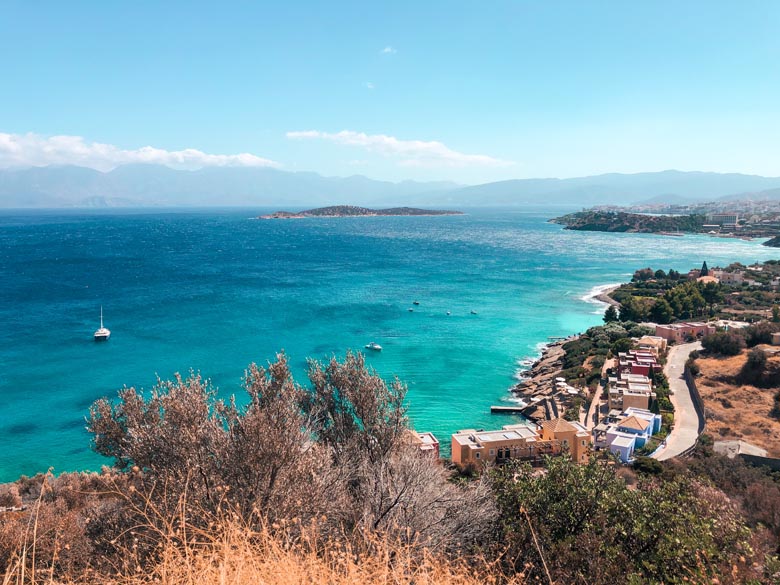
Our tip to you is to stay somewhere that is a maximum 90-minute drive from the places and attractions you plan on visiting in Crete.
We find 90 minutes to be the sweet spot. That way you’re budgeting enough time to drive back to your hotel or vacation apartment after the day’s adventures.
Not only does this save you time but also the stress of driving at night… More on this next.
Relate Guide: Not sure where to stay in Crete besides Chania? Our Where To Stay in Crete guide will help you. It shares insider tips on where to stay in Crete with kids, for a romantic couples getaway, to the best hotels for beautiful beaches and epic nightlife, with or without renting a car.
2. Decide How You Will Get Around
Most travel blogs and guidebooks will tell you that the best way to get around Crete is to rent a car. We beg to differ…
In our opinion, the best way to get around Crete depends on your travel style, budget, and what type of vacation you want.
If your vacation goal is to relax on the beach and see a handful of beaches and attractions, then taking public transport or guided bus tours is the way to go.
But if you plan on packing your travel itinerary with as much as humanly possible (guilty as charged!) or you want to explore Crete off the beaten track, then renting a car is your best option.
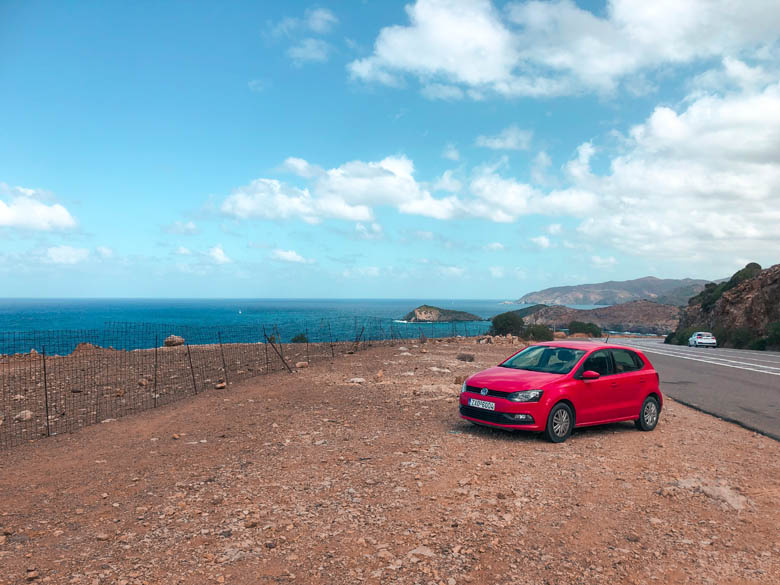
Renting a car is convenient but it does come with its own challenges. Firstly, it’s the most expensive way to get around the island. Especially during the high peak season so not ideal if you want to explore Crete on a budget.
Secondly and most importantly, driving in Crete is notoriously challenging.
Driving on the main highway on the north of Crete is pretty easy and straightforward. It’s the other main roads and often, unpaved dirt paths that are the problem.
Not only will you have to prepare yourself to navigate around plenty of holes and hairpin turns. But also dodge cats, shrews, mountain goats, and other wildlife crossing the road at night with nothing but your headlights to guide you…
If you plan to rent a car, make sure you read our Driving in Crete guide. It explains the essential road and traffic rules you should know, what the car hire requirements are, and tips for driving safely on the Greek island.
And for those of you who prefer to avoid the stress of driving, 0ur How To Get Around Crete guide explains it all. From how to take public transport, guided bus tours, and ferries, to how to rent a scooter or quad bike.
Don’t Forget Travel Insurance
Travel insurance will protect you against injury, illness, theft and even trip cancellation. It’s comprehensive cover in case anything goes wrong. We never go on a trip without it as we’ve had to use it many times in the past. Here are our favourite companies that offer the best value and service:
- SafetyWing (best for everyone)
- AXA (for US residents)
- Outbacker (for UK residents)
- Allianz (for Germany residents)
Does Crete Have Uber, Bolt and Lyft?
There is no Uber, Bolt or Lyft (i.e. any ride-sharing services) on Crete. Taking a regular metered taxi is the only option.
Bonus Travel Tip: Book a taxi in advance for long taxi journeys (i.e. airport transfers or from one town to the next) to avoid overpaying. We used Crete Cab and were happy with the service and price we paid. You can also easily book private transfers to anywhere on the island on GetYourGuide.
3. Book Flights, Hotel and Car Rental Months in Advance
Now for the ultimate budget-friendly travel tip.
Book your flights, hotel and car rental in advance to avoid sky-high prices. Especially if you’re visiting Crete in June, July, and August when it’s peak travel season.
In this case, make sure you book your flights and hotel at least 6 months in advance. You don’t want to be left with exorbitant options that either have terrible reviews or ultra-luxury options that cost an arm and a leg.
If you’re able to travel during shoulder season (mid-April to early June and September to mid-October), booking 3 months in advance should be more than enough.
We always use platforms like Expedia or Google Flights to find the cheapest flights.
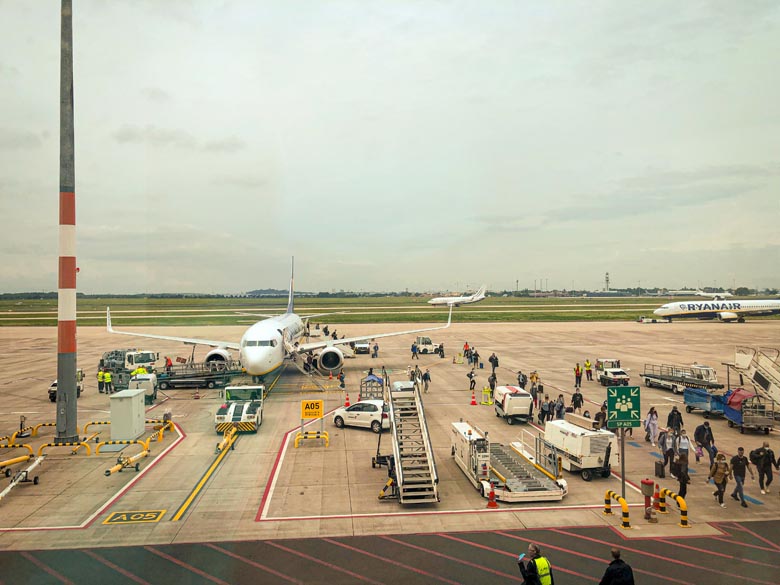
For hotels, we recommend Booking.com because you can make a hotel reservation and not pay anything until your travel dates approach. And most importantly, many of their hotels offer free cancellation.
Always a good thing to have in case travel plans change.
If you do plan to rent a car in Crete, make sure you book this at least 3 months in advance. You’ll save yourself lots of money (and stress).
Don’t make the mistake of hiring a car once you arrive. Car rental companies will overcharge you because you’re already there and have limited options.
You can easily compare prices for renting a car on DiscoverCars.com or RentalCars.com.
Bonus Travel Tip: Make sure you include comprehensive car insurance when hiring a car in Crete. Road conditions are not great and you don’t want a burst tire or dent to ruin your vacation.
4. Don’t Visit Crete During High Peak Season
The ultimate tip for traveling Crete on a budget – avoid visiting during the high peak season (i.e. summer vacation months).
Almost everything costs double the usual price. Hotels, car rentals, flights, sunbed rentals and some even say that restaurants have different menus for high and low season!?
We know it’s not always possible when you’re a family with kids. But if you can avoid it, you’ll save TONS of money AND avoid the crowds.
Best Time To Visit Crete
If June, July, and August are not the best time to visit Crete, then what is?
In our humble opinion – shoulder season. The short in-between period between low and peak season.
We call this the ‘Goldilocks’ season. The weather is not too hot or too cold, there are not too many or too few travelers on the island, and finally, it’s not as expensive.
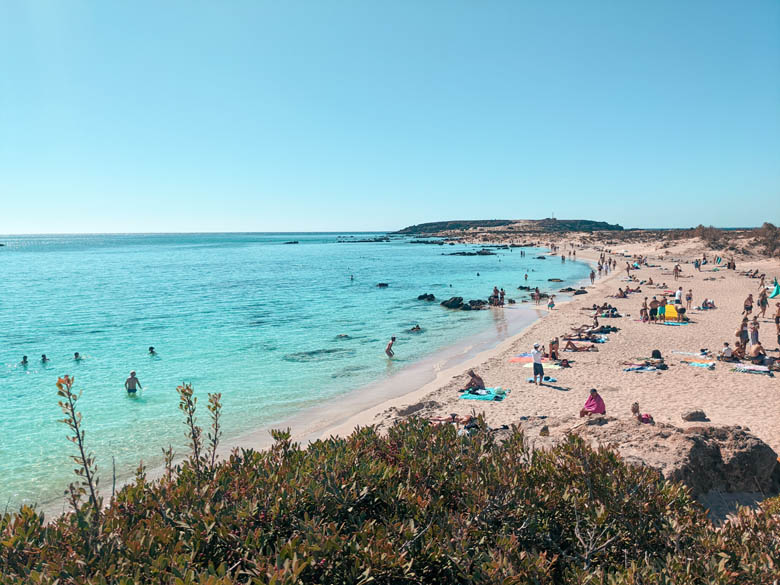
Shoulder season in Crete is around mid-April to mid-June and then again from mid-September to mid-October.
We’ve been to Greece during both shoulder seasons. We found that traveling to any of the Greek islands during April and May tends to be cheaper compared to September and October. And for good reason.
Sea temperatures are cooler in April and May compared to September and October so fewer people are traveling to Crete (or any Greek island) then.
But honestly, you’ll only find the water cold if you’re a local or you’re from a warm country. If you live in Germany (like us) or any notoriously cold country, then it will be warm enough for you!
Visiting Crete during Low Peak Season
The cheapest time to visit Crete is during the low travel season. That’s the cooler 6 months between mid-October to mid-April.
This is the time you’ll find the lowest prices for flights, hotels and car hire but the weather can be a hit or miss. If you’re a digital nomad or traveling Crete for a long period (i.e. a month or more), this shouldn’t be a problem.
Our only tip for you is to stay in the larger towns like Heraklion, Chania and Rethymno. Many of the smaller tourist towns are closed during the low season. That includes shops, cafes, restaurants and even hotels.
So unless you can hunt and gather your own food or you intend on taking ‘remote’ working to the next level, avoid staying in the small tourist towns during the low peak season.
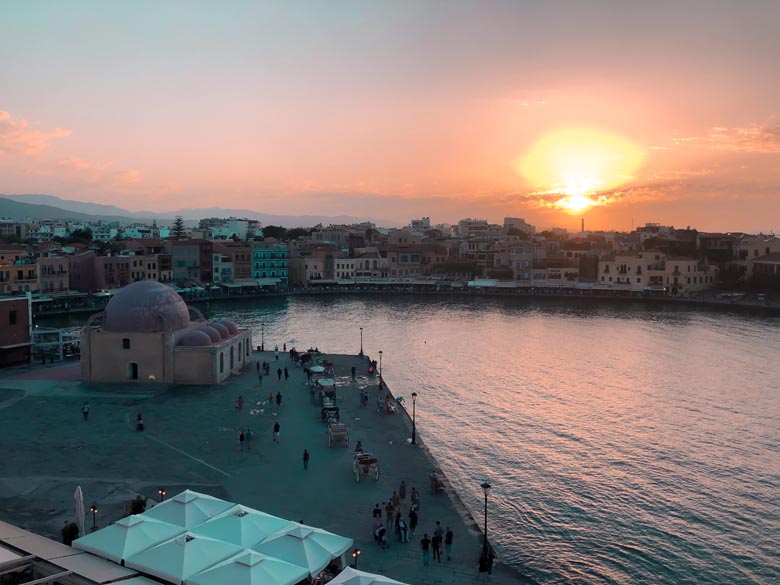
5. Get a Local SIM Card
This is a universal travel tip (not just for Crete). Always get a local SIM card. Never – I repeat – NEVER use international roaming.
Not only will you save yourself A LOT of money, but also the anxiety of waiting for that dreaded phone bill…
You can easily buy a prepaid SIM card at any local supermarket or small vendor in Crete. They’re available at the airport too, but it’s usually more expensive.
For the ultimate convenience, we’d recommend getting an eSIM. That way you’re able to hop online as soon as the seatbelt signs are turned off and you don’t have to waste any time hunting down a SIM card.
We always opt for eSIMs when we travel. We love the ease that everything is done online and that you’re able to top up if needed. Plus, it’s eco-friendly since you’re not creating any waste. A win-win all around!
Save Me For Later

6. Download Google Offline Maps
Internet is decent in Crete but if you’re going off the beaten path, you’ll no doubt wander where the 3/4/5G is weak (or non-existent).
This happened to us quite a few times. If it were not for Michael’s GPS superpower, we would still be lost in Crete… (just kidding).
Learn from our mistakes and download (or save) the area you’re exploring on Google Maps so you’re still able to navigate when there’s no signal.
7. Crete is Card-Friendly But You’ll Need Some Cash
This surprised us, but Crete is pretty card-friendly. Most certainly more card-friendly than Germany where we live!
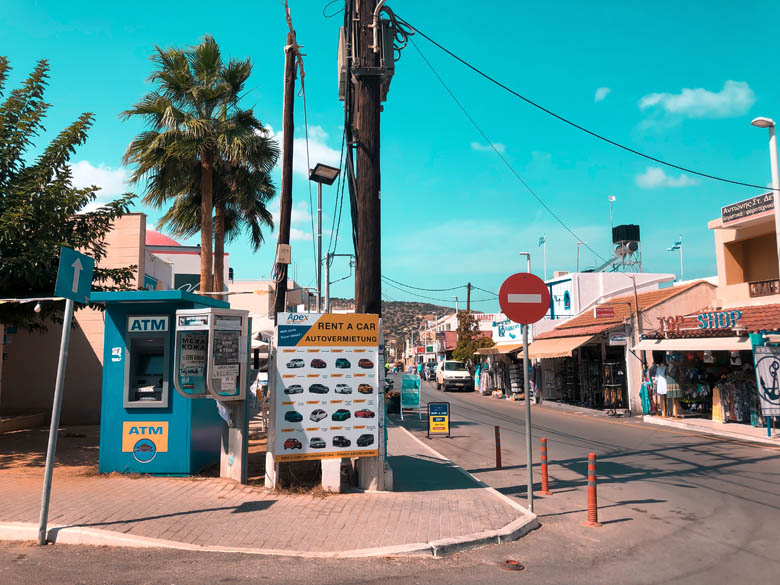
You can pay by card at cafes, restaurants, bars and shops. The only time you’ll need cash is for small ticket items like parking, food and drinks sold at market stalls, entrance fees for national parks (i.e. Samaria Gorge, Richtis Gorge), or tourism tax to visit certain attractions or beaches (i.e. Matala Caves, Balos Beach).
Most places accept both credit and debit cards issued by VISA or Mastercard. American Express? Not so much… The only places where we could use our Amex card were at Lidl supermarkets and BP refueling stations.
Crete is card-friendly but you’ll still need some cash. Based on our experience, a budget of €10 cash per person per day, should be more than sufficient. Everything else can be paid by card.
For a more detailed cost breakdown of how much things cost in Crete, check out our How Expensive is Crete guide.
Where To Withdraw Cash in Crete
There are plenty of ATMs in Greece. So don’t worry – you can always withdraw more if needed. But be wary that most banks will charge a fee of €2 to €4 for each withdrawal you make.
Our tip? Avoid withdrawing small amounts of cash frequently to avoid racking up unnecessary transaction fees. Instead, do a rough budget of how much cash you will need and make one withdrawal.
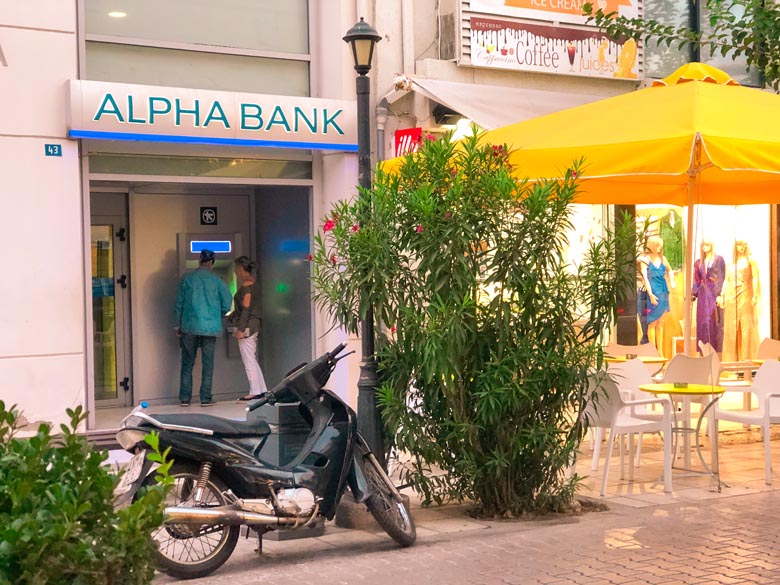
Otherwise, if you have a Revolut or Wise debit card (like us), you can withdraw cash from any Attica Bank ATM without any withdrawal fees (as long as you’re within your free limit).
Attica Bank is one of the only banks in Greece where you can withdraw money for free. The only downside is that there are only 3 Attica ATMs in Crete. You can find them in the town centers of Chania, Heraklion, and Rethymno.
If you can’t find an Attica Bank ATM close by, you can also withdraw cash at these banks:
- National Bank of Greece
- Piraeus Bank
- Alpha Bank
- Euro Bank Ergasias
Whichever ATM you choose, just make sure you avoid Euronet (or EC) ATMs. They’re the most convenient to find but also the most expensive to withdraw cash from.
Bonus Tip: We always use our Wise or Revolut cards when we travel. Besides free cash withdrawals, it’s also the cheapest way to convert and buy foreign currency for traveling. We’ve explained in detail how it works in our Revolut Travel Card guide.
8. Drink Tap Water in Crete – It’s Perfectly Safe
Okay – this tip is controversial. But we’ve put our stomachs down to the test so let’s settle this matter once and for all.
A quick Google search on government websites and reputable organizations shows that tap water is safe to drink in Crete, Greece. But if you ask locals or returning travelers, they will tell you that they only drink bottled water…
So is it safe for tourists to drink tap water?
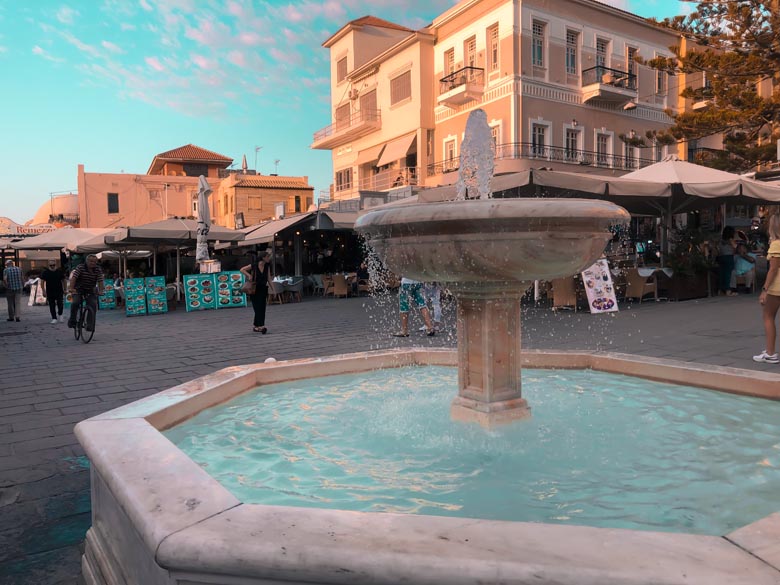
YES – it is perfectly safe to drink. I have a very sensitive stomach and had no problems whatsoever drinking the tap water there. I had no stomach cramps, no bloat, nothing… Maybe it’s not the best tasting water, but it’s also not the worst that I’ve tasted either.
Save yourself money and most importantly, save the planet by reducing plastic waste by drinking tap water instead.
9. Avoid Eating Out At Touristy Restaurants
Don’t fall for touristy restaurants – they’re tourist traps!
How do you know whether it’s a touristy restaurant? Well, they’re usually the ones with the best location (around the main town square or attractions) and the best views. You can also tell when they have dedicated staff standing outside calling and luring unsuspecting customers inside.
You’ll only find ridiculously expensive prices for shitty food at these places (excuse my language).
To be fair, this isn’t unique to Crete. You’ll find these tourist traps in almost every city or town that’s frequented by travelers. We’ve just learned what red flags to look out for from years of traveling.
If you’re unsure, double-check Google Reviews and have a look at their menu before entering. If there are no prices, run for your life!
Don’t get us wrong – Crete has INCREDIBLE food. You just need to avoid the tourist traps to find authentic, mouth-wateringly delicious Cretan food.
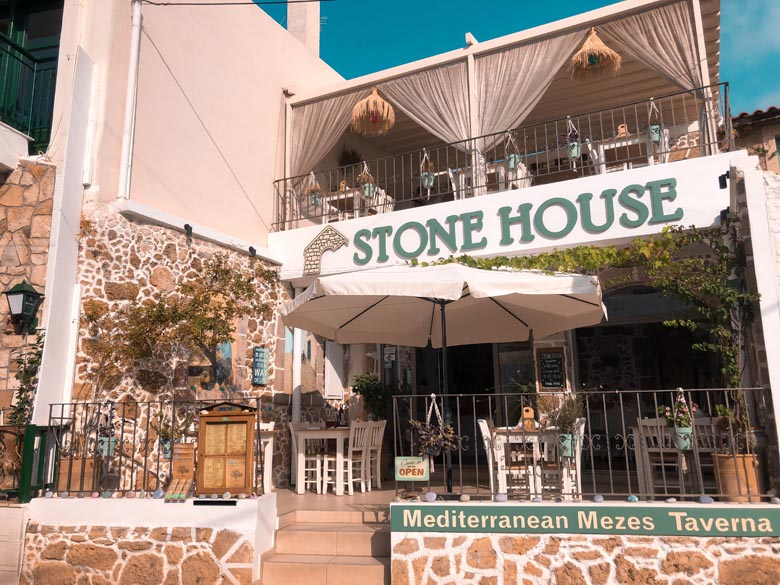
We always look for the tavernas (local Greek restaurants) away from busy town squares. Ideally, places locals would frequent. Eating where locals eat will not only guarantee you some of the best food on the island, but it’s cheaper too.
Make sure you leave space for dessert or a shot of raki (the national alcoholic drink of Crete). In true Greek hospitality, most tavernas will offer you one of these treats (and sometimes both) on the house.
Bonus Budget Tip: Buy breakfast and snacks from the supermarket if you prefer not to eat every meal out.
10. Tipping in Crete
There wasn’t always a tipping culture in Crete. Not until tourism became a big part of the island’s economy.
Now it’s pretty normal to tip between 5% to 10% of the bill. A 5% tip is the standard and a 10% tip is considered to be very generous.
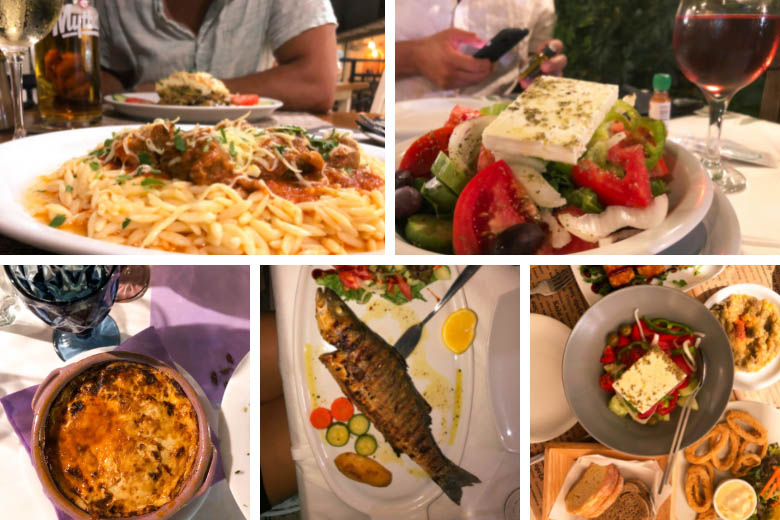
You can tip by card in restaurants. But you’ll need cash if you want to tip a taxi driver.
11. Speaking English in Crete
You can easily get by speaking English in Crete. As we mentioned earlier, tourism is big on the island so many locals have made the effort to learn and speak English. Some can even speak German (better than us!).
But it doesn’t hurt to learn a few basic Greek phrases to show your appreciation.
| English | Pronounced |
|---|---|
| Hello | Ya-sus |
| Good Morning | Ka-li-me-ra |
| Thank you | Ef-fah-risto |
12. Crete is Safe (Even for Female Solo Travellers)
Crete is an incredibly safe travel destination. There are no places on the island that you should avoid even for female solo travellers.
Crete has a low crime rate but that doesn’t mean that it’s immune to petty crime.
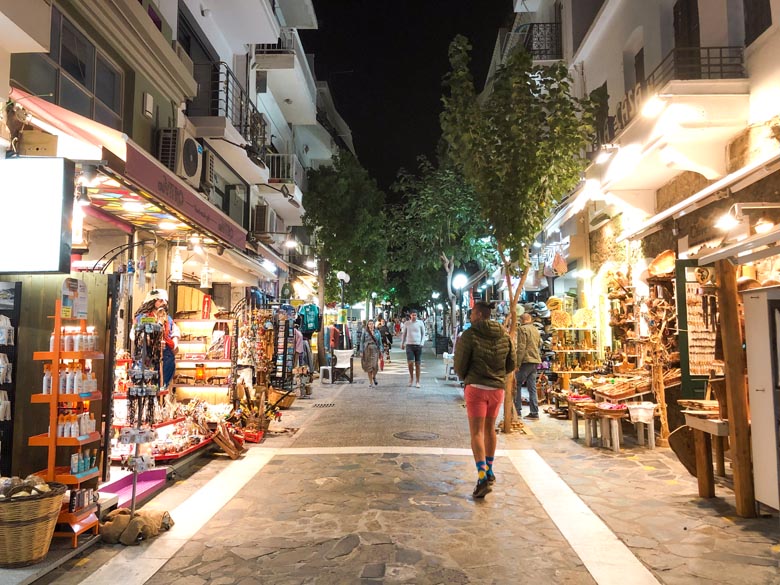
Like anywhere else, you should always lock your doors, not leave valuables in the car where they can easily be seen, and not leave your phone or other valuables unattended when you’re on the beach or at a cafe.
Besides that, the only ‘dangers’ are driving on unpaved, windy roads at night and earthquakes.
13. Always Have a Light Jacket and Sarong On Hand
This is a universal tip for traveling anywhere in Greece (including Crete). Always bring a light jacket and a sarong with you.
Like many of the Greek islands, it can get very windy in Crete. You’ll need a light jacket or hoodie to keep warm after the sun sets. Especially if you’re traveling to the island in the months of April, May, June, September, and October.
What’s the sarong for then?
Crete has hundreds of magnificent monasteries and churches across the island. The sarong is there so you can cover up and enter these religious sites respectfully.
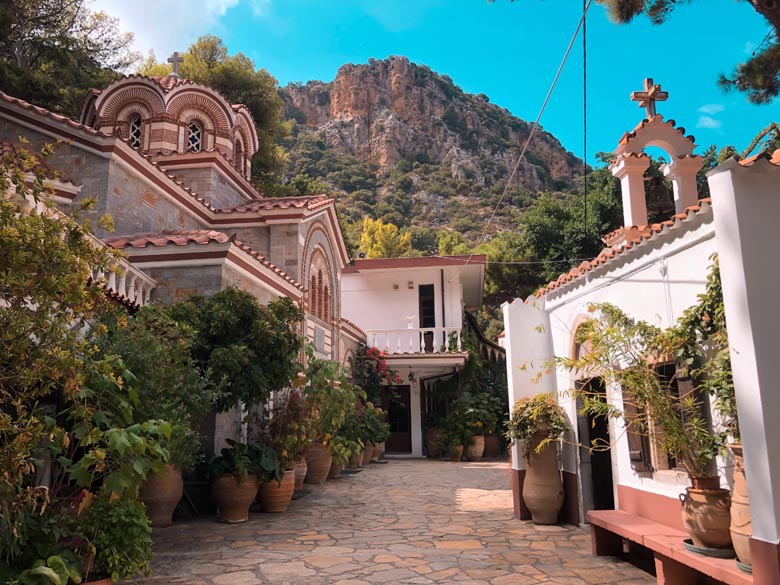
This means that you should cover your shoulders and knees and not enter any of these sacred places barefoot. This dress code applies to both men and women, by the way.
We wish someone had told us this before we traveled to Greece for the first time. This mistake cost us dearly and we had to pass up entering many of these places because we weren’t dressed appropriately.
This leads us to our next point…
14. Cultural Etiquette and Customs To Know
Traveling is a privilege. Always explore with an open heart and mind, and be respectful of the local culture. Besides dressing appropriately when visiting religious sites in Crete, here are some other basic customs and etiquette you should know.
Public Nudity Is Not The Norm
Whilst it’s perfectly safe to waltz around town in a skimpy bikini or speedo, we wouldn’t recommend it as a sign of cultural respect.
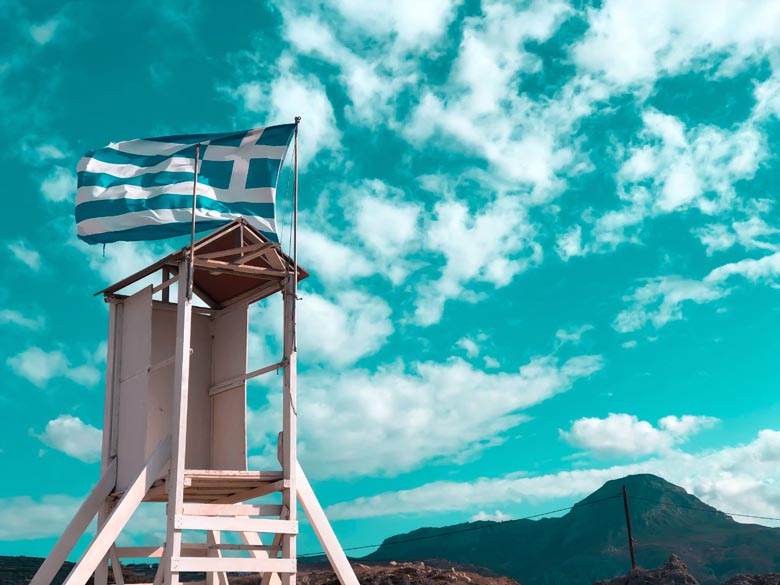
The main religion in Crete (and Greece overall) is Christianity, with the dominant denomination being the Greek Orthodox Church. It’s customary for locals (especially the older generation) to dress modestly but they do not expect tourists to follow suit (excuse the pun).
So feel free to walk around the towns of Crete in shorts and a vest. But please don’t go as far as walking around in revealing beachwear.
Locals also rarely go naked or topless on the beach. If you plan to do so, we’d recommend finding a nudist beach like Red Beach.
Eating Dinner Is An Occasion
Fast food is not a thing in Crete. I mean this both in terms of fast food chains and that restaurants may take longer to serve you food.
You can embrace this Cretan custom by not losing your patience and trying to hurry things along.
Having a meal together is more than sustenance in Greek culture. It’s a social occasion where both company and food are savored. Enjoy it – you’re on holiday after all.
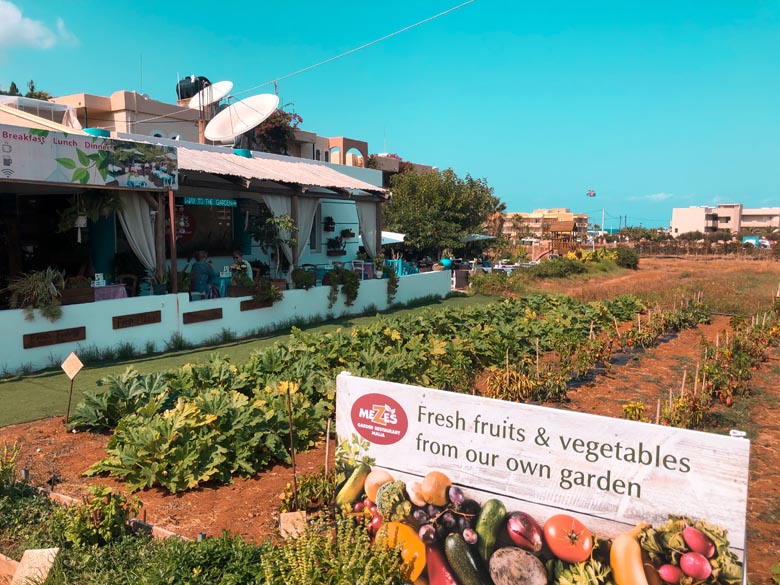
Don’t Haggle Over Prices
Bargaining over prices is not the norm in Crete. Most shops mark all their goods with prices so haggling is not necessary.
15. Don’t Flush Toilet Paper Down The Toilet
This is a weird – but important one. This tip may not save you money or time, but it might save you the stress of wondering WHY?!
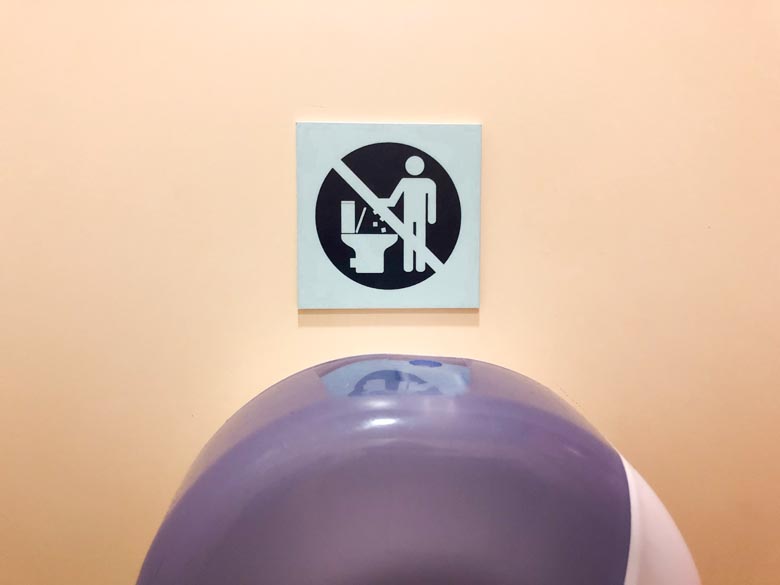
The reason why you can’t flush toilet paper down the loo in Crete is because of its very narrow sewage pipes. They’re around half the size of normal sewage pipes which means that they can easily get blocked.
This a big problem. Especially for the smaller towns in Crete that are closed for 6 months of the year during the low season. But don’t worry. You can easily help the locals out by throwing your toilet paper in the bin next to the toilet instead.
16. Bring Reef-Friendly Sunscreen and Insect Repellant
Crete is a beautiful island. You can help keep it this way by simply switching up your sunscreen.
Instead of using a commercial sun lotion, opt for an eco- and reef-friendly one like the SurfDurt Organic Sun Cream or Suntribe Organic Sun Cream.
Unfortunately, none of the sunscreens sold in Crete are environmentally friendly, and hence why we suggest bringing your own.
The same goes for insect repellant. Bring your own because it was impossible to find mosquito repellant on the island.
17. Other Tips For Traveling Crete On A Budget
Last but not least, some additional tips to help you travel Crete on a budget (especially if you’re traveling there during peak season).
Travel in a Group
I’m sure you’ve heard the term, ‘The more the merrier’. This is especially true when it comes to traveling. It’s not only merrier but also cheaper.
You can save tons of money sharing the cost of a vacation apartment, car rental, fuel costs, chartering your own boat instead of joining a group tour, and the list goes on.
Car Rental Tips
Besides booking your car rental in advance, you can save a lot of money by not getting a one-way rental.
Always return the car to the same place you picked it up from to avoid paying the one-way fee. Most car hire companies charge this. If you’re unsure, you can always ask beforehand.
Another budget-friendly tip is to include insurance when booking your car in advance. Don’t buy car insurance when you arrive or your bank account may be in for a nasty surprise.
If you want to include a GPS device or kid’s car seats, make sure you add these to your booking in advance.
And lastly, remember to return the car with a full tank of gas. You don’t want a surprise bill to taint the memorable vacation you had in Crete.
Travel Light
The secret to getting the cheapest flights to Crete is to travel lightly. By that, I mean traveling with a 7kg carry-on.
This is a hard one – we can never fit everything we need in a carry-on. But if you can (kudos to you), you can save up to 50% or more on flight tickets!
Stay in East Rather Than West Crete
We’ve stayed on both east and west Crete and can confirm from personal experience, that east Crete is cheaper.
Hotels, restaurants, and even shopping are cheaper in east vs west Crete. We’re guessing it’s because most travelers tend to stay in the west (near Chania) where it’s closer to the most popular beaches and attractions of the island.
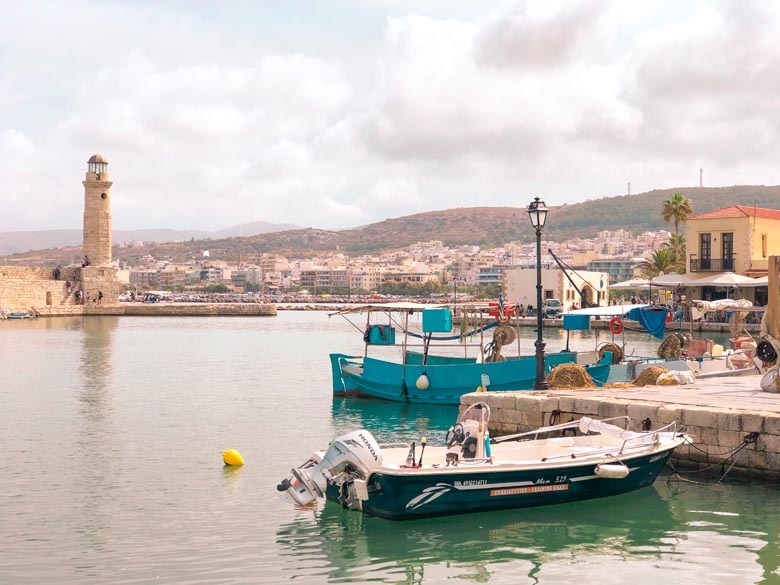
Our tip? Stay in east Crete if you don’t mind skipping the famous attractions and prefer to go off the beaten track. Otherwise, don’t stay in east Crete for the cheaper hotels or you’ll end up spending more of your vacation in a car.
If you’re unsure, check out our ridiculously detailed Crete Itinerary to help you decide. This epic blog post shows you what to see and do in Crete (both east and west) in 3, 4, 5, 7, 10, or 14 days! And the best part? We’ve shown you how to do it with or without a car.
Bring Your Own Snorkeling Gear
Crete is not really known for snorkeling. We only found one beach (Kedrodasos) where snorkeling was decent.
If you or your kids love snorkeling, make sure you bring your own gear. It’s not easy to find places on the Greek island that hire out snorkel equipment. You’ll have to buy it otherwise.
Wrapping Things Up
We loved every moment we spent in Crete and would return in a heartbeat! There’s so much to do and see on the island whether you’re looking to relax or go for an adventure.
We hope you found these Crete travel tips useful. For more awesome first-hand experiences and travel advice, check out all our Greece Travel Guides. And as always, if you have any questions, you’re welcome to ask us via our social media channels or e-mail.


